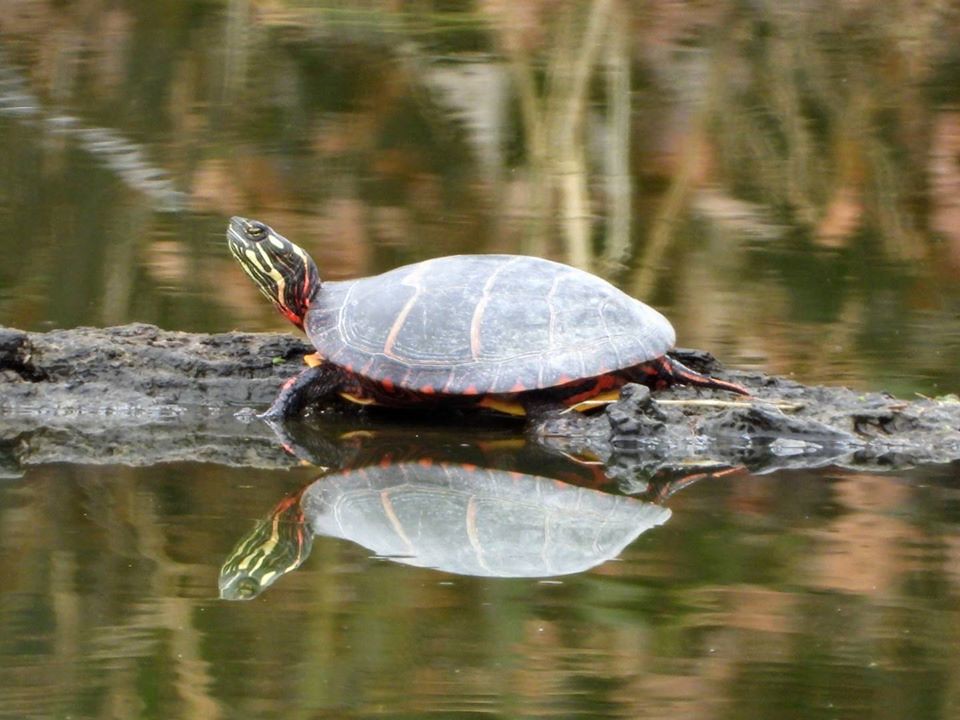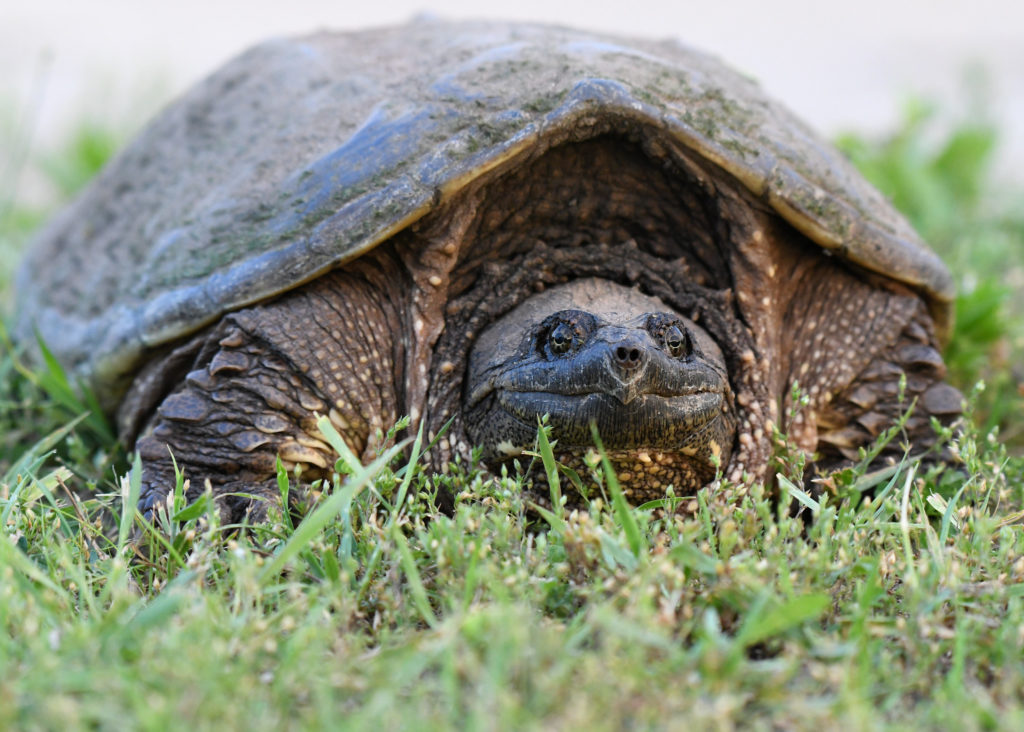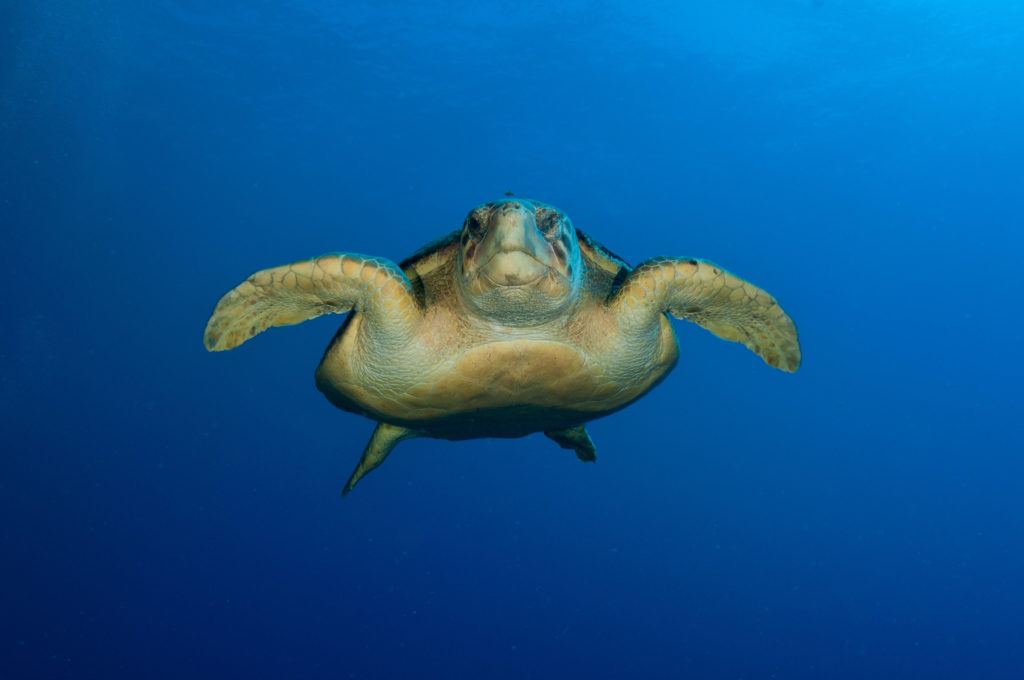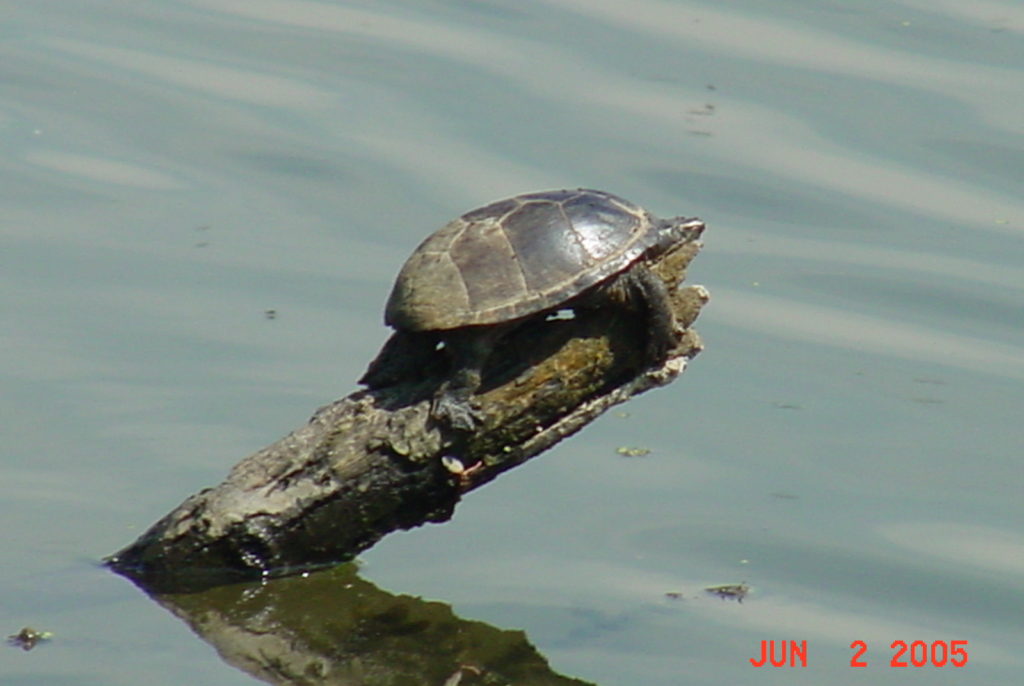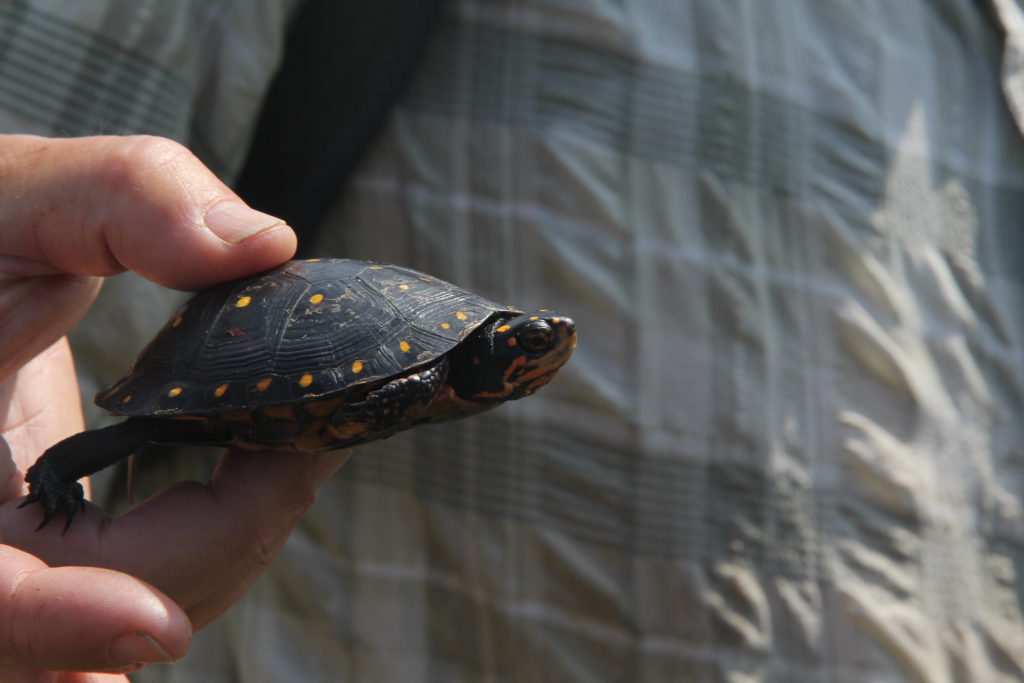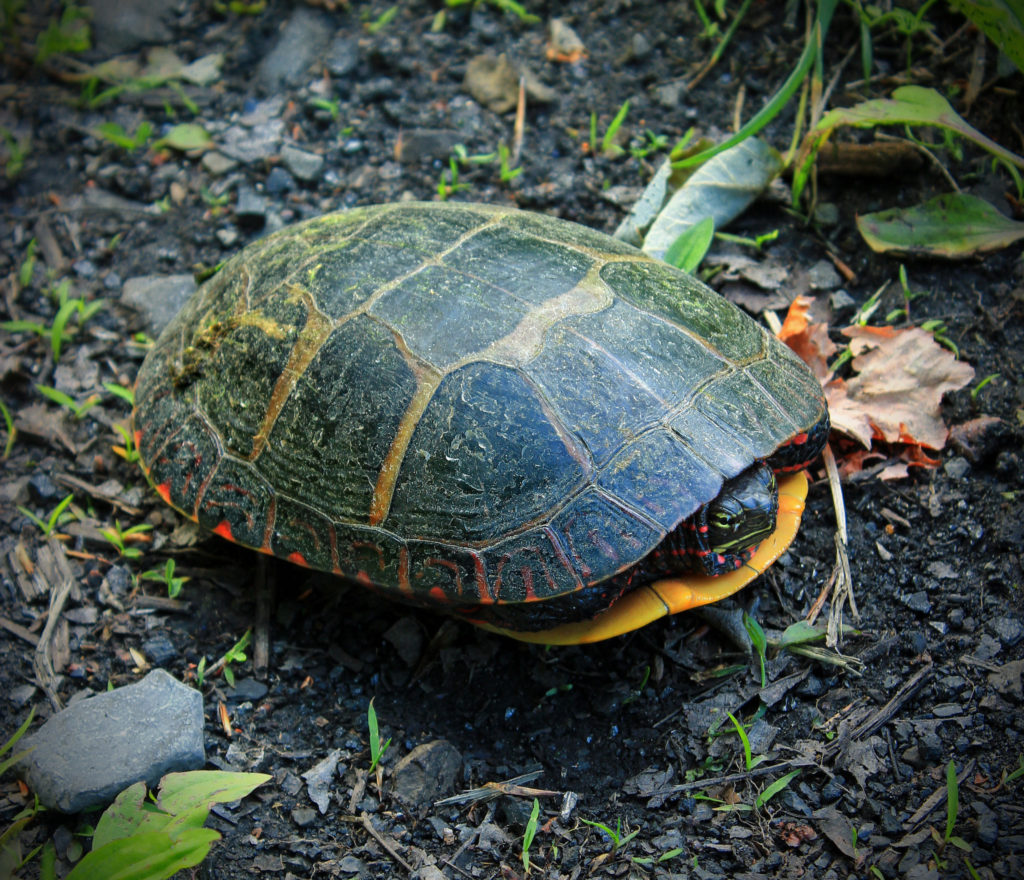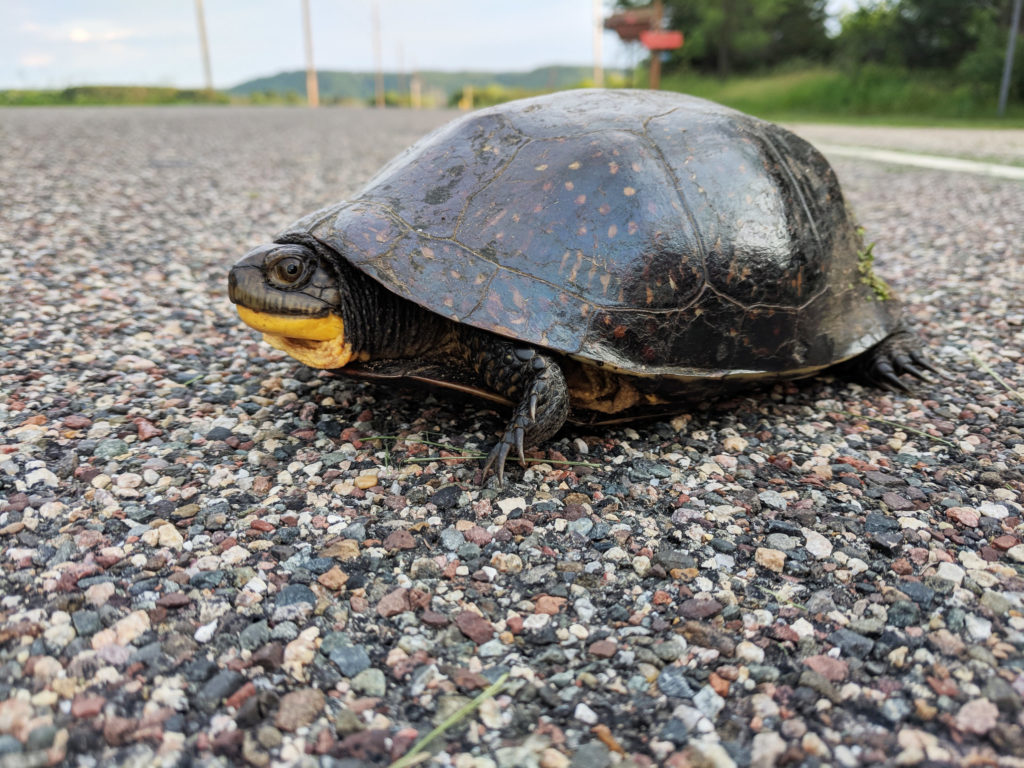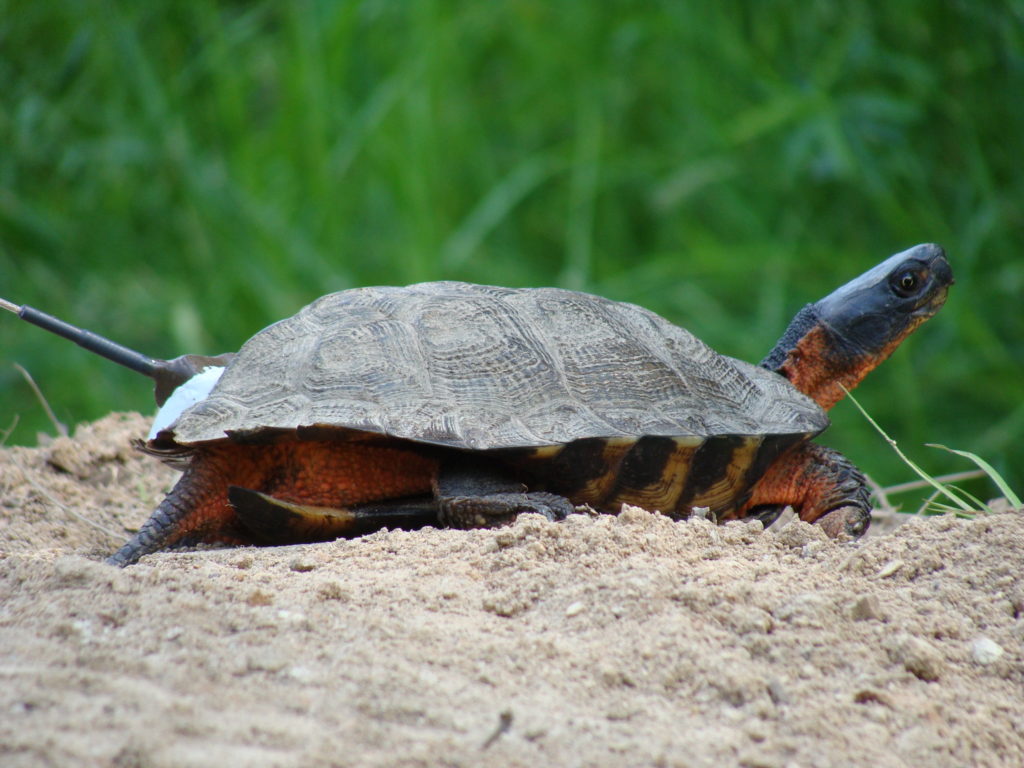Welcome to Creature Feature, a weekly series from the CELT education team highlighting local wildlife. Each week, we will share a short introduction to a local organism that you might encounter in your backyard or on our trails.
Here in Maine we have eight species of turtles including freshwater, terrestrial, and sea turtles. Some of these species are common, while others are rare and even endangered.
Have you ever been to a pond and seen a whole lot of turtles sunning themselves on a log? They are doing this to warm up their bodies. Turtles are part of the reptile family, which means they are cold-blooded and cannot regulate their own body temperatures the way warm-blooded creatures do. A turtle’s body temperature fluctuates with the air temperature around them, so as they warm up under the sun they become more active and as they cool down at night they often become sluggish and slow.
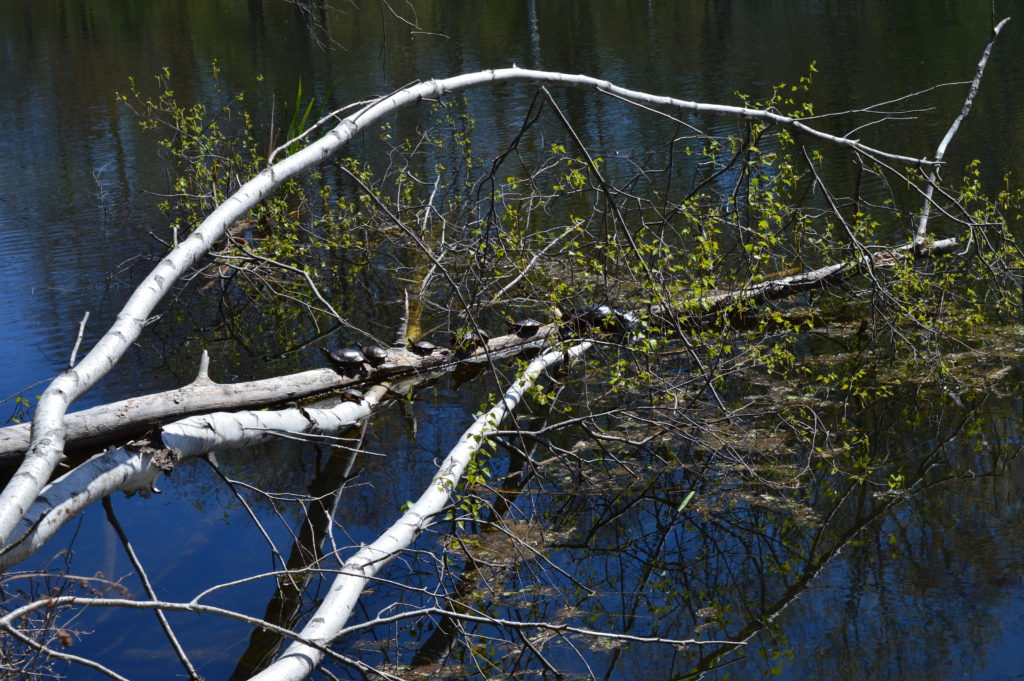
Like all reptiles, turtles reproduce by laying eggs. Female turtles bury a “clutch” of eggs in the dirt or sand, where the warmth of the sun incubates them. When the eggs hatch, the babies look like identical miniatures of the adults and are equipped to face the world alone.
In the spring and early summer, males looking for mates and females looking for the right spot to lay their eggs will often find themselves crossing a road. This can be extremely dangerous for the turtles! If you can, help them across, but make sure to follow these guidelines from US Fish and Wildlife Service:
- Always keep your own safety in mind — watch out for oncoming vehicles, signal properly when pulling over and recognize your surroundings first before working to help save an animal.
- Be very careful when moving the animal (it could be injured, or it could bite you depending on the species). If possible, sometimes it is best to just stand guard as the animal crosses the road on its own.
- If the animal needs to be moved, move it to the other side of the road in the same direction it was going. Using a car mat can be a good way to help the turtles across without actually picking them up. By using a car mat or putting something under the turtle, you can slide the turtle in the direction it was going.
- Do not pick the turtle up by the tail. Some turtles may be frightened and will try to bite (like snapping turtles). Here’s a great video showing ways to safely help a snapping turtle in the road such as the car mat trick, or by holding them at the base of the shell and not the side.
Did you know you can tell where a turtle spends most of its time by looking at its feet? Fresh water turtles, like the painted or snapping turtle, have webbed toes. Eastern box turtles are distinctly terrestrial, with stout legs with very little webbing in their toes. Loggerhead turtles have flippers, making them expert swimmers in the ocean. A turtle’s shell shape is another good indicator – turtles that spend most of their time in the water tend to have flatter shells, while turtles that spend most of their time on land have higher, domed shells.
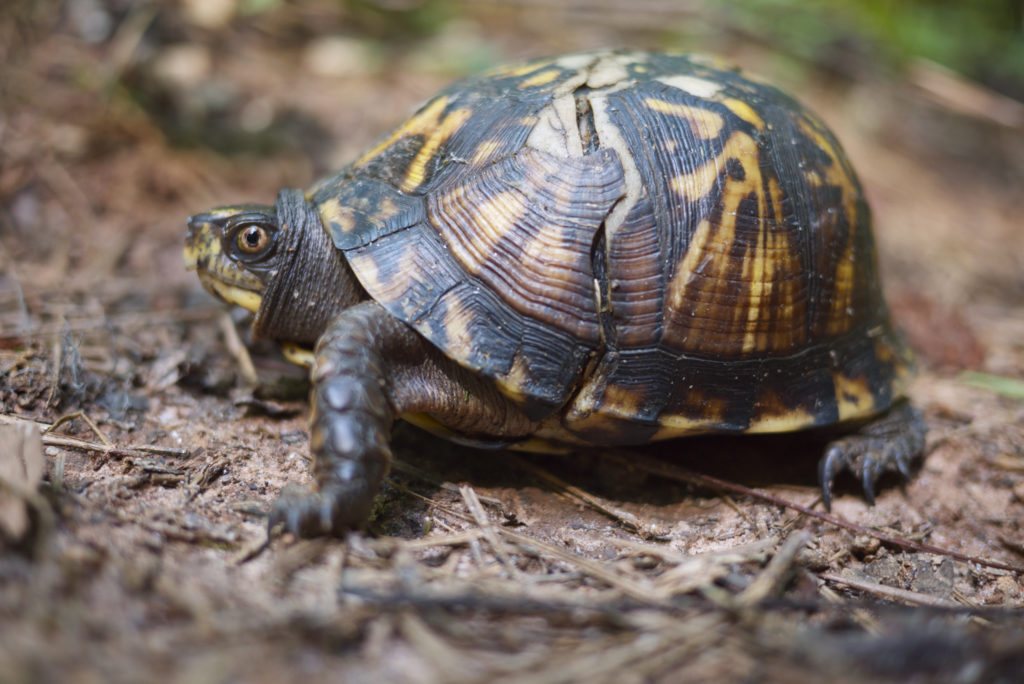
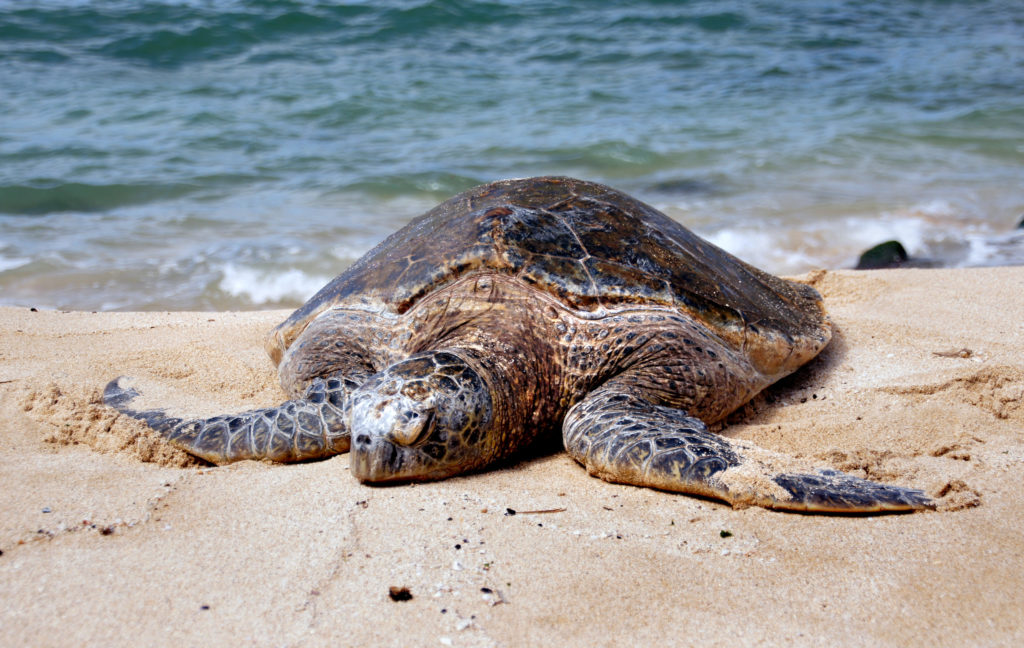
Fun Facts:
- Turtles can never leave their shell! Their spine runs down the center of their top shell, or carapace, and is attached to their body.
- Box turtles are the only turtle that can completely close their shell! There is a hinge on their bottom shell, or plastron, that they can use to effectively close their shell tight and protect themselves from predators.
- Turtles can live a really long time! Some eastern box turtles can live up to 75 years. A giant female Galapagos Island tortoise who lived at the Australia Zoo in Queensland even lived to be 175 years old.
- Turtles are often called “cousins” of dinosaurs! They evolved alongside dinosaurs, emerging as a distinct clade (or group of modern species sharing a common ancestor) about 260 million years ago. Many of the sea turtle species alive today closely resemble their ancient ancestors.
—BY LISA GENT, CELT EDUCATION COMMITTEE CHAIR
